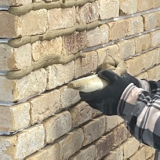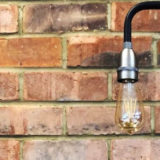Brick slips, those thin cuts of brick or tile designed to replicate the appearance of traditional bricks, have become increasingly popular. They can transform a space, offering the charm and aesthetic of brick without the heft and extensive labor. But does installing brick slips require the same bureaucratic hoop-jumping as other building changes? Let’s delve into the realm of planning permissions concerning brick slips.
Understanding Planning Permission
Before we jump in, it’s essential to comprehend what planning permission is. In many countries, planning permission refers to the approval needed from local authorities to construct or make significant changes to buildings or land. It ensures the alteration does not negatively affect the surrounding environment or neighbors.
Brick Slips: External vs. Internal
External Application
If you’re considering brick slips for the external façade of your home or building, the scenario might call for more scrutiny. Changing the external appearance of a building can sometimes require planning permission, especially if:
- Your building is listed or in a conservation area.
- The change is deemed a drastic deviation from the existing appearance.
- Local regulations have specific guidelines about façade changes.
It’s always prudent to consult with your local council or planning authority before making significant external changes, including installing brick slips.
Internal Application
For the interior of homes or buildings, the installation of brick slips usually doesn’t require planning permission. It’s typically seen as cosmetic – similar to changing wallpapers or painting. However, always ensure that any interior changes still meet local building regulations, especially concerning safety or your landlord.
Other Considerations
- Building Regulations: Even if you don’t need planning permission, the installation might still need to comply with local building regulations. This is especially true if the brick slips come with insulation.
- Neighborhood Restrictions: Some neighborhoods or housing associations might have their guidelines or covenants that restrict certain changes to ensure aesthetic uniformity. Always check to avoid future complications.
- Professional Installation: While DIY is tempting, a professional can ensure that brick slips are installed correctly, meeting all local regulations and standards.
Conclusion
While brick slips predominantly offer a cosmetic shift, it’s vital to approach the installation process with the due diligence reserved for more extensive renovations. For external applications, always consult with local authorities or experts to ensure you don’t run afoul of any regulations. When in doubt, ask. Better safe than sorry!
FAQs
- What are brick slips made of?
Brick slips are made from thin slices of real brick or manufactured by us driect from high-quality genuine clay bricks that are the 100% appearance of real brick. - Can brick slips be used around fireplaces or stoves?
Yes, many brick slips are suitable for high-temperature areas, but always check the specifications of your application. - Do brick slips provide insulation?
While brick slips themselves don’t offer insulation, they can be paired with insulation boards during installation. - How long do brick slips last?
With proper installation and maintenance, brick slips can last as long as traditional bricks. - Are brick slips waterproof?
Most brick slips are water-resistant, but for areas like bathrooms, you might need additional sealants. We recommend our sealers for such installations, Check them out on our Accessories page.




































